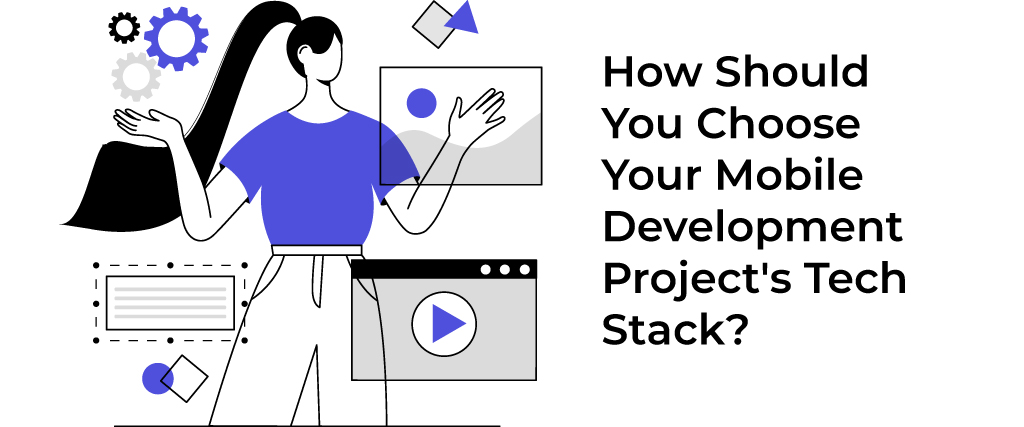Mobile App Development Tech Stack: A high-end application is developed using several procedures and tools.
Not only do you want to provide your end consumers with the most outstanding digital solution available, but you also need the correct software to guarantee excellent quality and a smooth process.
It would be best if you chose the appropriate tech stack for the app you are creating to do this.
This blog covers the tools and frameworks for your app development process in more detail.
Mobile App Development Tech Stack – What is a technological stack?
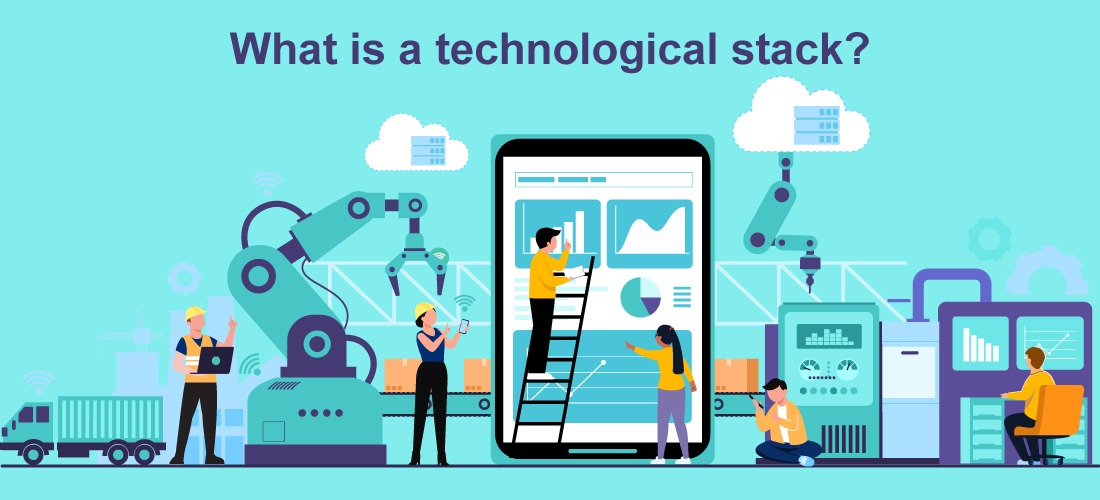
A technology stack, sometimes known as a tech stack, is a collection of technologies app developers use to create online and mobile applications.
The development team uses a variety of programming languages, frameworks, libraries, servers, software tools, and UI/UX solutions to create it.
Your application’s feasibility and competitiveness, as well as its functionality, scalability, and long-term maintenance, are determined by the mix of your tech stack.
You may choose a technology stack for your development operations.
That is up to date with the most recent technical developments and scalable and flexible enough to keep up with emerging breakthroughs and trends.
Frontend and Backend
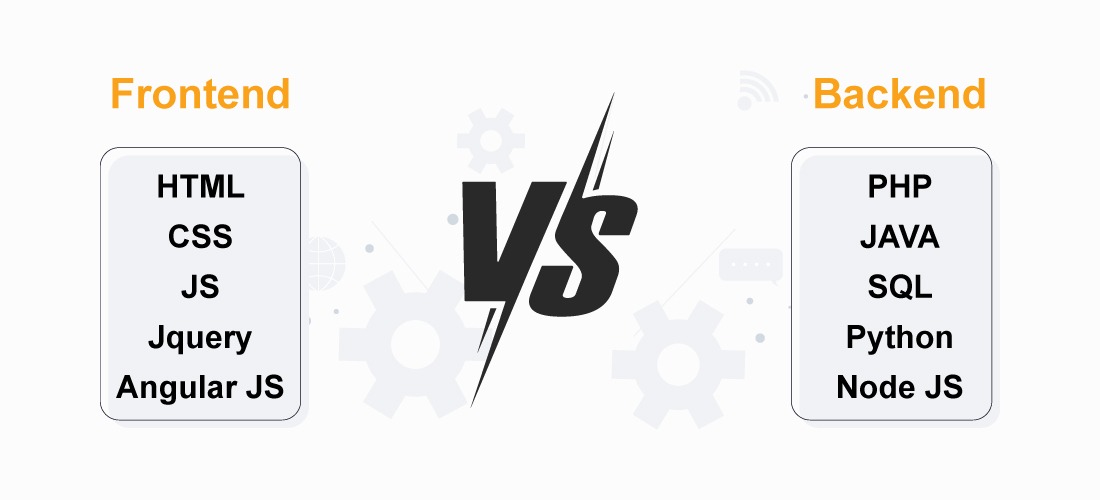
The front end and the back end make up the two components of a tech stack.
Or, to put it another way, the server side and the end-user side.
The setup and optimization of all the interface components are part of frontend technologies, which focus on everything the user can see on the screen.
Although users cannot see the back end, it is just as crucial as the front end.
The frontend functionality, as well as data management and storage, are often handled by the backend.
Frontend technologies include, for instance:
- Hypertext markup languages, or HTML, control how the structure is displayed on an interface.
- using formatting languages like CSS to style content published in HTML
- JavaScript is used to program interactive and dynamic features.
- Libraries and UI frameworks like ReactJS, React, Node.js, and many more.
Standard backend technologies include:
- Operating systems
- Web hosts
- C#, Java, PHP, Python, Objective-C, and more programming languages
- Web frameworks like Express.js
- a database like MongoDB
- cloud computing platforms like Google Cloud
Full Stack Sets – Mobile App Development Tech Stack
Full-stack sets, which are comprehensive collections of technologies created for different development objectives depending on the programming language, framework, customer requirements, databases, and chosen settings, are often used by experienced developers.
Popular full-stack technology stacks used by seasoned engineers include the following:
- MongoDB as the database, Express.js as the framework, React as the library, and Node.js as the platform make up the MERN stack.
- High-end and high-performance applications often employ MERN.
- MEAN is a stack that uses Express.js as a framework, MongoDB as a database, and Angular.js and Node.js as backend platforms.
- Apps and websites for e-commerce often employ MEAN.
- LAMP stands for Linux as the operating system, Apache as the server, MySQL as the database, and PHP as the programming language.
- It is one of the most widely used backend stacks. LAMP is mainly used for PHP application hosting.
How do you choose the best tech stack?
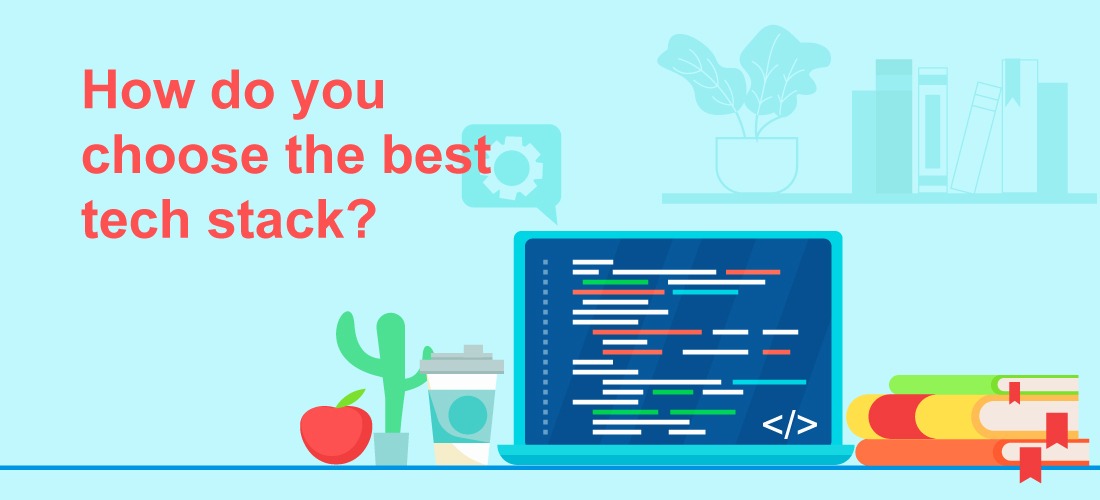
There are a few phases to choosing the best tech stack for your development operations and a lot of research.
It’s a good idea to think about asking yourself the following questions before selecting from the diverse selection of technologies for your tech stack.
What specifications does my project have?
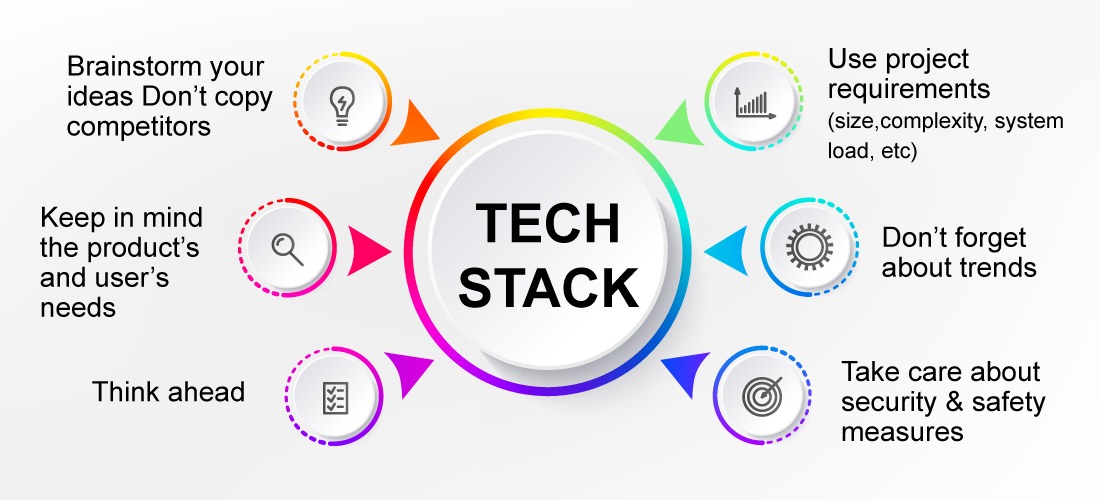
Before choosing your technology, you should consider your project’s scope and goals.
Your tech stack may need to include additional tools as your project grows in complexity and size.
More extensive projects sometimes require a complex technological foundation to ensure the integrity and functionality of your software.
When processing massive volumes of data, these vast tech stacks are employed with numerous tiers of frameworks and computer languages.
No matter how big your project is, it’s important to remember to avoid using too many different technologies.
You should only concentrate on the crucial technologies your project needs.
Having too many technologies in your stack might make your project needlessly tricky and confusing and lead to unforeseen incompatibility repercussions.
Which technology can I work with without feeling uncomfortable?
If you’re a seasoned developer, you may want to revert to the tools you’ve already used.
Your expertise makes it simpler for you to deal with these technologies and saves you a lot of time when investigating and experimenting with alternative technologies and their features.
Utilizing the technologies you are currently acquainted with is vital, but you should also look at how well they work with other technologies.
After all, you want a tech stack where each technology interacts with others practically and efficiently.
To choose which technology stack is ideal for your project, spend some time researching its advantages and bottlenecks.
Which modern technologies provide excellent levels of scalability?
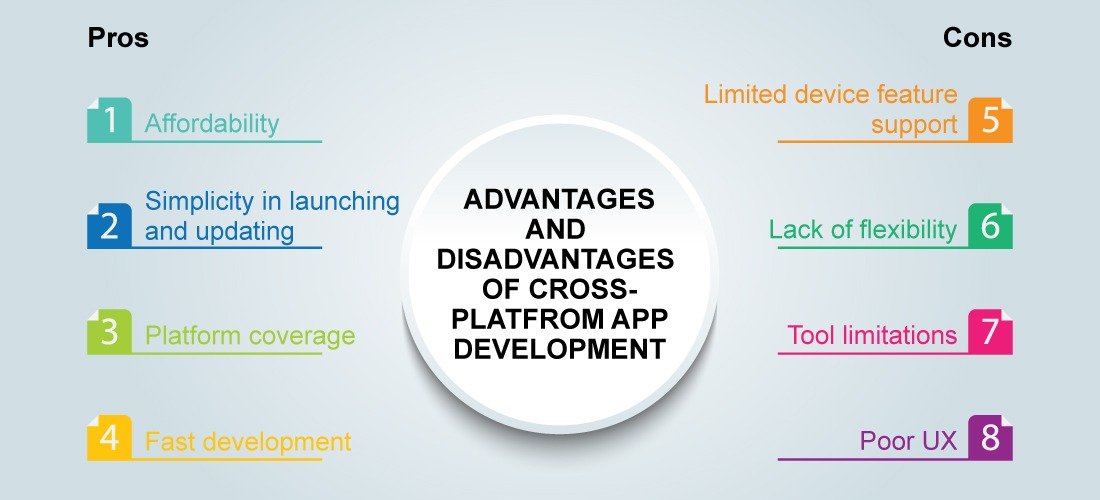
Make sure you use scalable technologies since technology is constantly changing and getting better, and it will continue to do so in the future.
Scalability may be divided into two categories: horizontal and vertical.
Horizontal scalability is your digital solution’s capacity to operate on several devices, processing numerous requests concurrently as your software gains popularity.
The degree to which you may add additional features and capabilities in the future without disrupting the app’s basic structure is referred to as vertical scalability.
Powerful programming languages like JavaScript, which have extensive libraries and networks, are designed to be flexible and scalable.
FAQ List
1. What technology stack is ideal for creating mobile applications?
An illustration of the mobile app technology stack
Use the open-source Xamarin platform to create cutting-edge, practical iOS, Android, and Windows applications.
2. Can a mobile app be created by a full-stack developer?
“Full-stack developers” are equipped with the knowledge and abilities to create a complete mobile app, including the backend, middleware, and frontend technologies.
Conclusion
In our MERN implementation at Yugasa Software Labs, we use MongoDB, Express.js, React.js/Native, and Node.js.
These tools mainly depend on JavaScript and are essential to creating innovative mobile and web applications of the highest caliber.
In addition to our dependable group of skilled engineers, we also provide an Agile development methodology, third-party integrations, improved scalability, and first-rate security. Our company operates mainly on the cloud.
Do you want to learn more about Yugasa Software Labs‘ technological stack?
Or are you searching for a digital partner to assist you in creating your mobile or web application?
Contact us, and we’ll be happy to ask you to join us for discussions about long-term cooperation.
Read More: HOW CAN MOBILE APP TECHNOLOGIES HELP YOUR TRAVEL BUSINESS SUCCEED LIKE EXPEDIA?


